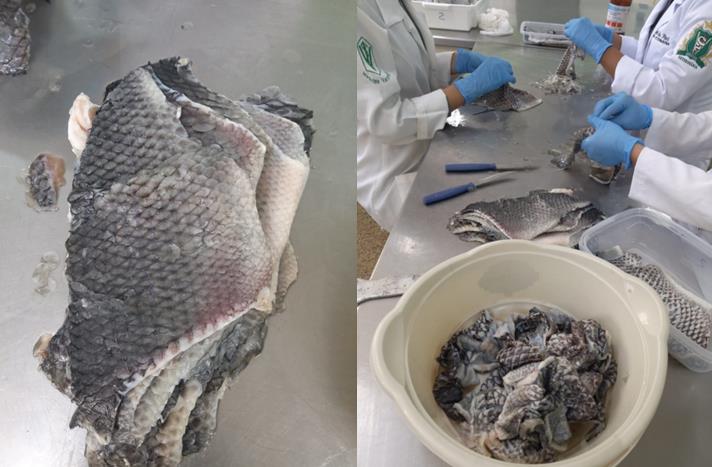Drying of residual tilapia skin from filleting using a thermophotovoltaic solar dehydrator
DOI:
https://doi.org/10.21708/avb.2021.15.2.9824Abstract
Tilapia comprises one of the most cultivated fish species worldwide, mainly commercialized in the form of fillets. As a result, the amount of waste generated by processing is high, with tilapia skin being commonly discarded and not used as food for human consumption. In this context, the aim of this study was to dry residual filleted tilapia skins in a solar dehydrator and perform physical-chemical analyses after drying in order to evaluate the potential for the development of byproducts. The skins were collected at a fish market on Mercado do Peixe in Teresina - PI. Treatments consisted of four sodium chloride concentrations (0.0%; 25.0%; 50.0% and 100.0%), with five replications, totaling 25 samples. The skins were dried in the solar dehydrator for 24 hours, followed by moisture, ash, protein, lipids, pH and water activity analyses. Moisture in the in natura skins was 57.7%, differing significantly from the dehydrated tilapia skins, which ranged from 9.4% to 10.6%. The ash in the in natura skins was 0.17%, while dehydrated tilapia skins displayed variations from 1.19% to 4.17%. The crude protein found of the in natura skins was 41.4%, significantly different (P <0.05) from the skins submitted to the solar dehydration method. Based on these findings, the use of solar dehydrator for short periods is confirmed to favor the uniform dehydration of residual tilapia skin from filleting, generating a product with satisfactory bromatological patterns for the development of fish-based by-products.
Downloads

Downloads
Pubblicato
Fascicolo
Sezione
Licenza
Autores que publicam na Acta Veterinaria Brasilica concordam com os seguintes termos: a) Autores mantém os direitos autorais e concedem à revista o direito de primeira publicação, com o trabalho simultaneamente licenciado sob a Licença Creative Commons Attribution que permite o compartilhamento do trabalho com reconhecimento da autoria e publicação inicial nesta revista. b) Autores têm autorização para assumir contratos adicionais separadamente, para distribuição não-exclusiva da versão do trabalho publicada nesta revista (ex.: publicar em repositório institucional ou como capítulo de livro), com reconhecimento de autoria e publicação inicial nesta revista. c) Autores têm permissão e são estimulados a publicar e distribuir seu trabalho online (ex.: em repositórios institucionais ou na sua página pessoal) a qualquer ponto antes ou durante o processo editorial, já que isso pode gerar alterações produtivas, bem como aumentar o impacto e a citação do trabalho publicado (Veja O Efeito do Acesso Livre).


 Esta obra está licenciada com uma Licença
Esta obra está licenciada com uma Licença 